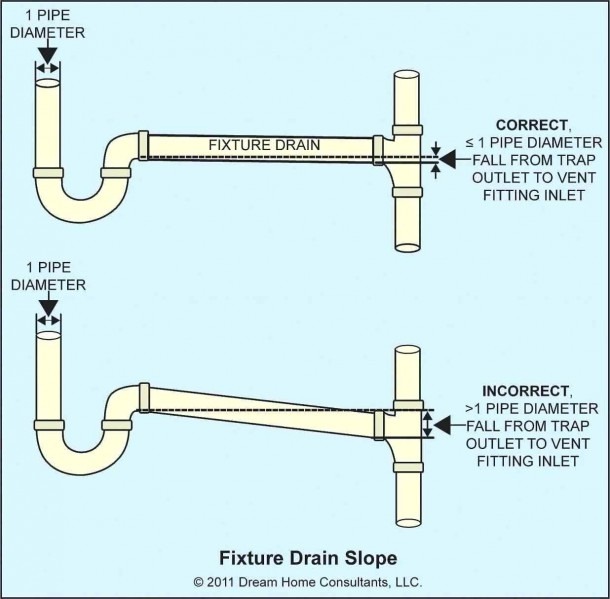When embarking on a renovation or seeking out efficient plumbing solutions, many homeowners and DIY enthusiasts encounter a critical query: can a tub and shower share the same drain? This plumbing puzzle stirs curiosity and highlights the intricate mechanics and principles underpinning household drainage systems. Let’s explore this topic in depth by examining plumbing design, considerations, potential advantages, and common pitfalls associated with shared drains.
At its core, the harmony of bathroom elements relies heavily on efficient drainage systems. Understanding the principles of plumbing can furnish homeowners with the insights they need to make informed decisions. The fundamental premise is that both a shower and a tub need to drain wastewater effectively, preventing any clogs or flow issues that could lead to bigger problems.
When planning a bathroom layout, it’s essential to acknowledge two typical drain configurations: the conventional setup where each fixture possesses its separate drain line, and the shared drain arrangement. In the latter, both the tub and shower are connected to a single drain line that channels wastewater into the home’s main sewer stack. This design can be advantageous for some layouts, particularly in smaller bathrooms where space is at a premium.
However, not every configuration aligns with this concept. The type of plumbing setup significantly influences whether fixtures can share a drain without causing maladaptive flow dynamics. Several factors affect this setup—including the type of drainage piping used, the slope or pitch of the pipes, and the overall volume of water being drained simultaneously from each fixture.
### Types of Drainage Piping
Plumbing systems can vary widely based on the materials used. PVC (polyvinyl chloride) has become the go-to choice for modern plumbing systems due to its corrosion resistance and affordability. Alternatively, cast iron and ABS (acrylonitrile butadiene styrene) are also prevalent, each with specific advantages and disadvantages concerning noise reduction and durability. Understanding the nuances of these materials aids in making efficient plumbing decisions.
If considering a shared drain, it’s crucial to assess the diameter of the pipes. A 2-inch diameter pipe is standard for tub and shower setups, but if the flow rate exceeds the capacity—say when both a shower and tub drain simultaneously—this could lead to slow drainage and potential back-ups. It’s imperative, therefore, to assess the system’s capacity to manage dual water flows efficiently.
### Flow Dynamics: Gravity and Drainage
Gravity is a significant player in plumbing; water flow is dictated by gravity as it seeks the most straightforward path to the drain. When a tub and shower share a drain, the layout must ensure that the lines have a sufficient downward slope to facilitate swift exits for wastewater. If pipes become horizontal or improperly angled, even minimal blockages can impede flow, leading to a myriad of plumbing issues.
### Advantages of Shared Drains
In specific configurations, sharing drains can yield remarkable benefits. Space-saving is perhaps the most immediate advantage. Utilizing a single drain line frees up valuable real estate, allowing for expansive design opportunities or additional storage solutions in smaller bathrooms. Additionally, it can reduce the overall plumbing material required, trimming costs on both installation and maintenance.
However, the convenience of simplicity comes with considerations. Shared drains may facilitate quicker installations and repairs, but they can complicate maintenance. For instance, if a blockage occurs, pinpointing the issue along a shared line may require more invasive tactics than if each fixture had its separate line. Homeowners should weigh these advantages against potential challenges, ultimately deciding what best suits their unique situation.
### Common Pitfalls and Considerations
While the idea of a shared drain is appealing, several pitfalls warrant careful contemplation. One significant concern involves the risk of clogs; when debris accumulates, multiple fixtures sharing a drain can create significant plumbing dilemmas. Hair, soap scum, and other residues can congeal, leading to slow drainage or, worse, backflow issues where wastewater seeps back into the shower or tub itself.
Furthermore, local building codes frequently stipulate standards regarding drainage systems. Compliance with these standards is crucial; failure to adhere may result in fines or compel homeowners to undertake remedial adjustments. Therefore, before embarking on such a plan, consulting local plumbing codes and regulations can save time, effort, and financial resources.
### Conclusion
In summary, the answer to whether a tub and shower can share the same drain isn’t a simple yes or no, as it hinges on various factors, including design, material, flow capacity, and local plumbing codes. Shared drains can maximize space and improve efficiency, but potential drawbacks exist, such as maintenance complexities and risk of clogs. Ultimately, every bathroom is unique, and a thorough analysis of one’s specific plumbing needs will aid in arriving at the most effective drainage solution.
